Fine woodworking and explorations of recycled materials are among the furniture and object designs from these eight independent Chicago design studios presented as part of our North American Design 2024 series.
From reinventions to classic wood designs to large community design projects, the Chicago furniture and object designers featured below demonstrate a wide range of material and aesthetic sensibilities in the city on the shore of Lake Michigan.
Chicago is the third largest city in the United States, and is well-known for its architectural legacy, being home to the world’s first skyscraper.
“Chicago is an interesting city to be a designer in,” designer and University of Illinois at Chicago (UIC) associate professor Sung Jang told Dezeen. “It’s big enough to have variety, but small enough that a lot of us know one another and are able to ‘follow’.”
“I think a lot of Chicago’s designers tend to have some type of link with the industrial past of the Chicago and the midwest area – the heavy manufacturing, important furniture makers, maybe other materials-driven making practices.”
Chicago is built on a history of French explorers and fur traders settling in an area primarily inhabited by the Potawatomi Native Americans.
The city became a hub for railroads, manufacturing, and food production among other diverse markets, which led to a skilled workforce.
Today, universities such as the UIC School of Design and the School of the Art Institute of Chicago feed the city’s design, architecture and craft production.
It is also home to NeoCon, the country’s largest contract furniture fair, which makes it a hub for industrial design every summer.
Chicago’s wide-reaching history can be seen in the work of the eight designers shared below, with pieces ranging from objects made of post-consumer plastics with the help of robots, to sculptural furniture made with fine woodworking techniques and American hardwoods.
“I can’t say there is a common theme or materials, but traditional making practices are well rooted here – wood, bronze casting, textile, glass, etc.” continued Jang.
“The midwest mindset and its work ethics deliver a sense of composure, honesty and reliability in design, even among those whose job is to offer new things to the world.”
Read on for eight independent studios and designers shaping Chicago’s design culture today.
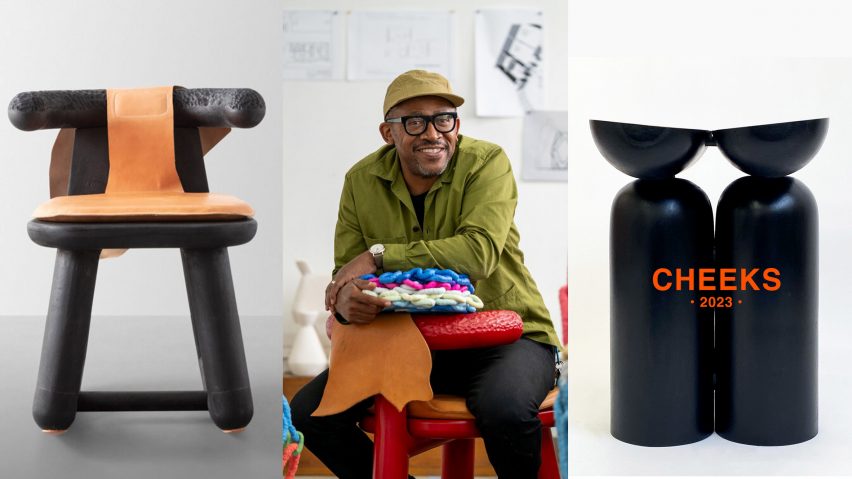
Norman Teague Design Studio
A fixture in Chicago’s design scene, Norman Teague began his career working in fabrication for retailers and restaurants before attending the School of the Art Institute of Chicago.
Along with coworkers Daniel Overbey, Max Davis and Mila Methvin and local fabricators, Teague designs both objects and spaces using mainly American woods and slip-cast ceramics out of Norman Teague Design Studio, and plans to work more with recycled plastics and hemp materials soon.
“We are excited to think through each of the projects as small problems, some of which have public leaning solutions and others that are looking more to aesthetics and fun-ctions,” Teague told Dezeen.
“The problem might simply be the need to be a part of problem-solving as it pertains to beautification, education and economically existing in a world that doesn’t really care about Black folks.”
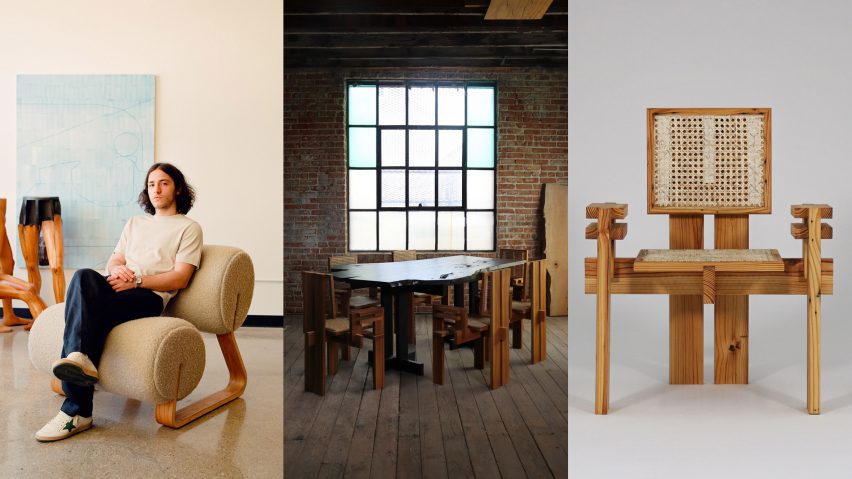
Noam Atelier
Designer Noam Nayberg primarily uses hardwoods to create custom furniture and objects, which range from tables, chairs, and stools to lighting and other objects.
Trained at the School of Art Institute of Chicago, Nayberg combines traditional craft and industrial production methods to create his work from his studio Noam Atelier, which he launched full-time this year after working on the business in his after-hours.
“Design and making are intertwined,” he said. “I have a high regard for classic fine woodworking and I find a place for it in my work. I want my designs to tell the story of the process.”
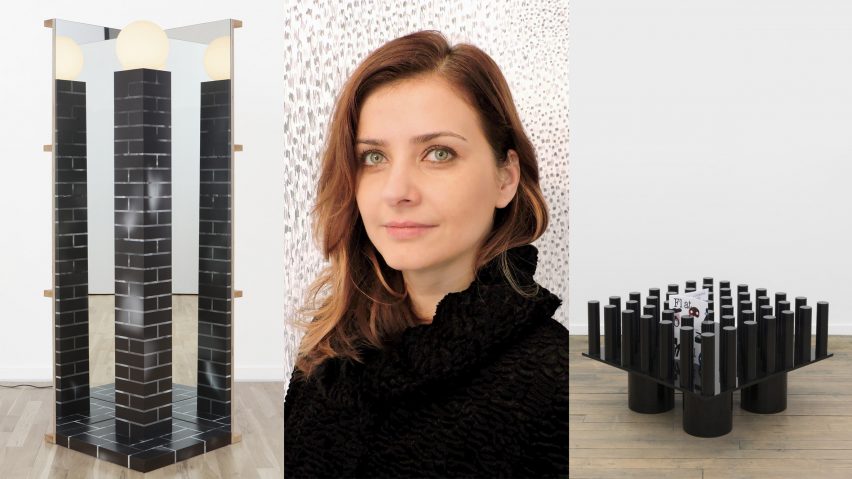
Ania Jaworska
Poland-born designer Ania Jaworska trained and worked in architecture before studying at Cranbrook Academy of Art and producing furniture, exhibitions, installations and research from her multi-disciplinary studio based in Chicago.
“I am particularly interested in architecture and design’s fundamental and common forms,” she said.
“My work reassesses and challenges one’s relationship to the things around us as a method of critical inquiry where the outcome is not necessarily to problem-solve but rather expose, meddle, exaggerate, and speculate”.
Jaworska focuses on “reinventing already established standards” when it comes to materials, often using them in unexpected ways so that their “original intention or reading” is transformed, as seen in a furniture series where laminate has been superimposed with a brick pattern.
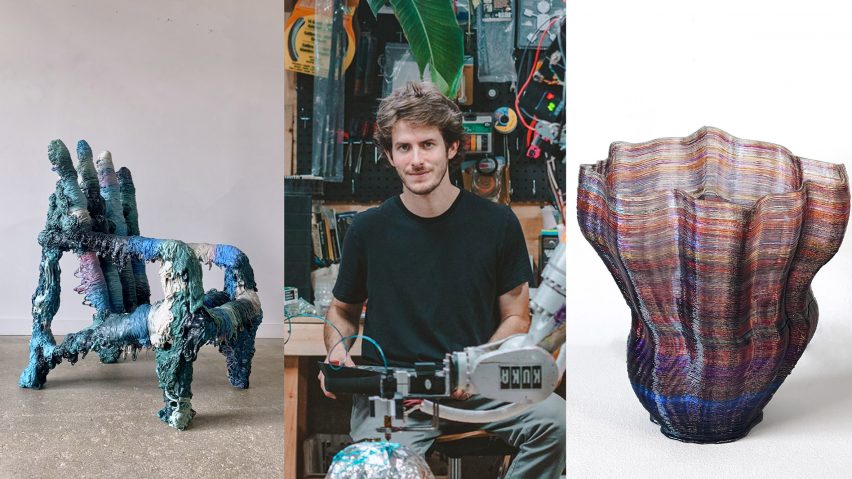
Cody Norman
Designer Cody Norman wants to bring attention to the plastic crisis and over-consumption through his work, which includes multi-coloured objects, furniture and installations made of recycled post-consumer plastics and steel.
His background in graphic design, printmaking, 3D design and robotics from the School of the Art Institute of Chicago, Cranbrook Academy of Art and Ballard International inform his sculptural pieces.
I have a network of about fifty households and small businesses in the Chicago area that donate their plastic waste to my studio,” Norman told Dezeen.
“My work is self-produced using a combination of retrofit industrial plastic processing tools (a shredder and an extruder), a used industrial robot (retired from a Mercedes factory) and custom studio tools.”
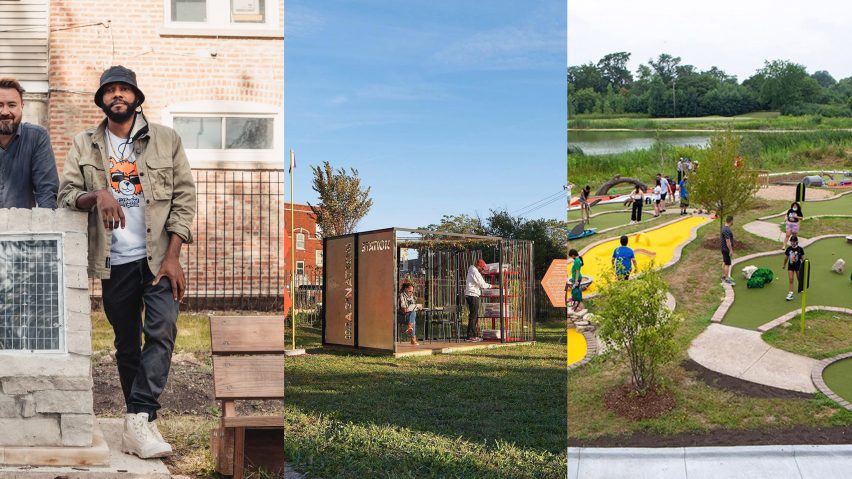
Eric Hotchkiss
Based out of Englewood, designer Eric Hotchkiss uses a variety of mediums for community-based projects, ranging from a miniature golf course to a mural integrated with LED lights to a Domino table.
“My work is often about addressing community engagement and empowerment, especially in underserved and overexploited areas,” said Hotchkiss. “It’s essential for me that people see me producing the work and recognize that it is created in Englewood or other similar neighbourhoods where I work.
“This visibility helps reinforce the connection between the community and the work, emphasizing local production and engagement.”
Hotchkiss’ work is informed by a background in mechanical engineering, having trained and worked as an engineer before transitioning into design at the School of the Art Institute of Chicago.
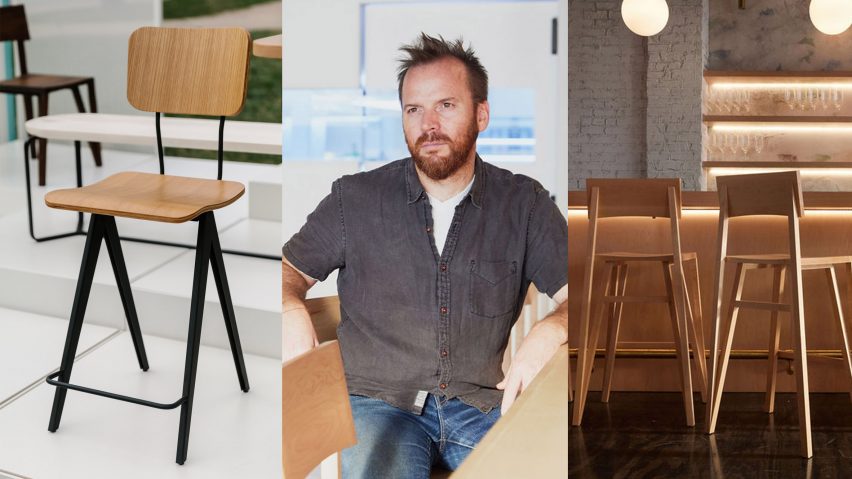
Dan Sullivan
Designer and fabricator Dan Sullivan was working as a touring musician before transitioning into making furniture after picking up small carpentry jobs on the side.
In 2006, he co-founded Dock 6 Collective alongside five other designer-fabricators, a creative space that hosts their individual business, including Sullivan’s Navillus Woodworks.
Primarily creating furniture for public spaces like venues, restaurants, museums and more – including pieces used on the set of Hulu’s The Bear – Sullivan says one of his focuses is making work that is durable and easy to maintain.
“We choose materials for visual appeal that are also durable and easy to maintain, considering the wear and tear that the furniture or millwork will be subjected to in a public setting,” he told Dezeen. “Production design is also extremely important; even if we’re doing a small batch of stools or chairs we plan for larger runs.”
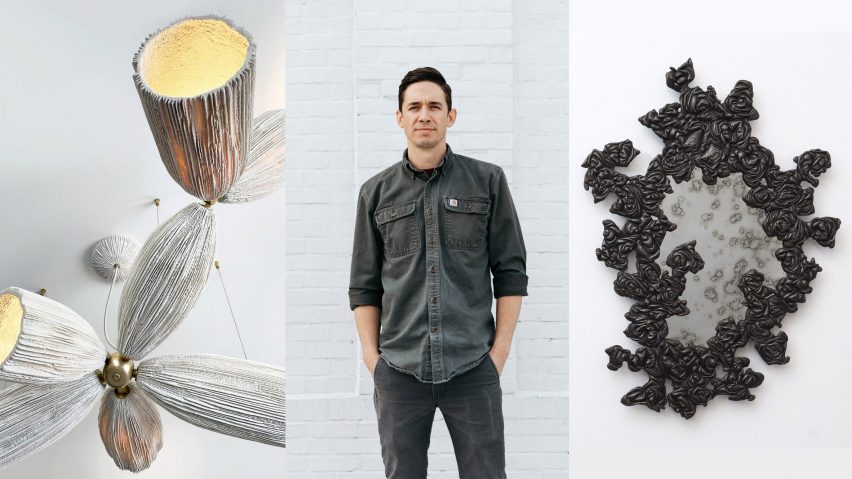
Steven Haulenbeek
“My work has been more about developing unique production methods to achieve original results,” designer Steven Haulenbeek told Dezeen. “I am interested in objects that tell a story, or at least spark curiosity instead of focusing on a utility or style.”
Trained in drawing, sculpture and object design, Haulenbeek makes lighting and other objects primarily out of Ice-Cast Bronze and Resin-Bonded Sand at his independent design practice, founded in 2010.
Both techniques of his invention, Ice-Cast Bronze combines the “freezing climate of the Chicago winter with the lost-wax casting process”, while Resin-Bonded Sand makes use of discarded casting sand from the metal casting industry to create highly textural pieces.
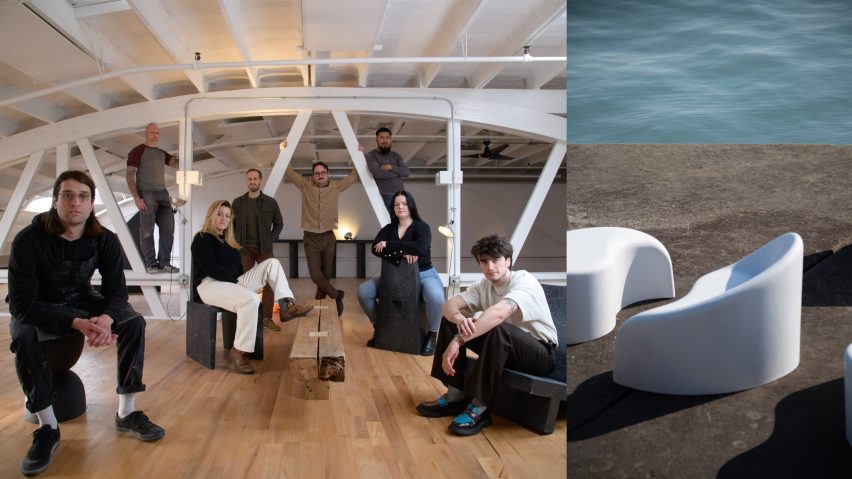
Zachary A
Design studio Zachary A is composed of eight individuals working across disciplines including sculptors, engineers and designers, who produce furniture for both indoor and outdoor settings.
Largely made of fibreglass and resins with a custom aggregate mix, the pieces take abstract or curvilinear forms while remaining relatively light, which the studio notes would be “impossible” in concrete.
“We design for the unexpected,” said the studio.
“We design pieces that don’t need to be brought in in the winter, or protected from the snow under a tarp. They are sculptural, integral members of a design concept and not an afterthought accessory to an outdoor space.”
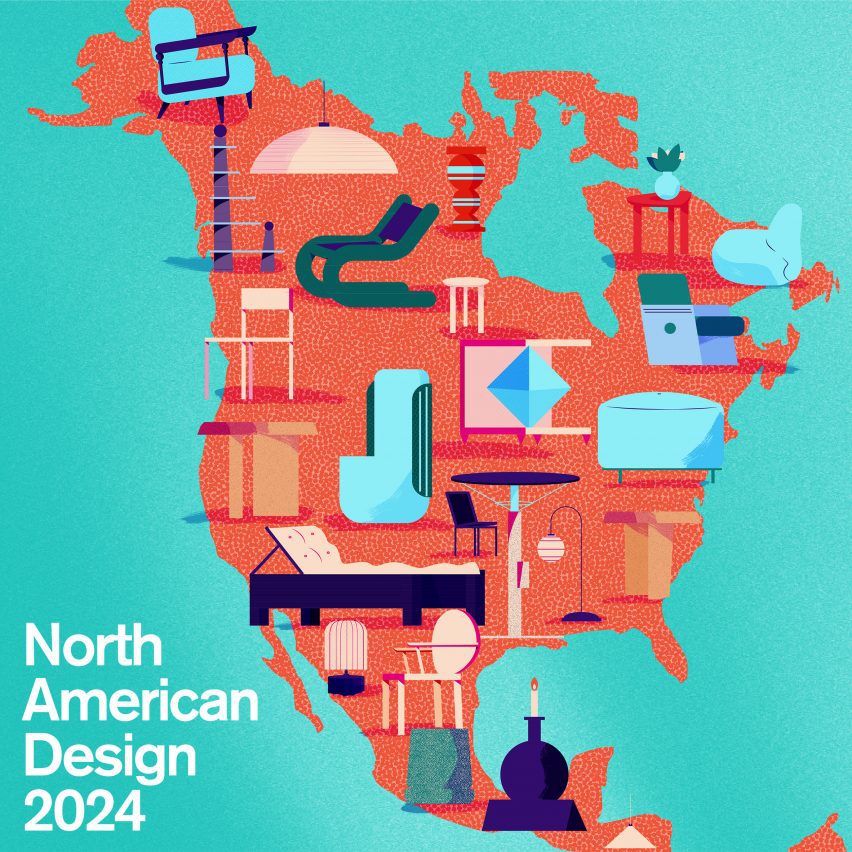
North American Design 2024
This article is part of Dezeen’s North American Design 2024 series selecting independent furniture and product design studios from cities across Canada, Mexico and the United States.
The first edition of this series is created in partnership with Universal Design Studio and Map Project Office, award-winning design studios based in London and now in New York. Their expansion into the US is part of The New Standard, a collective formed with Made Thought.

